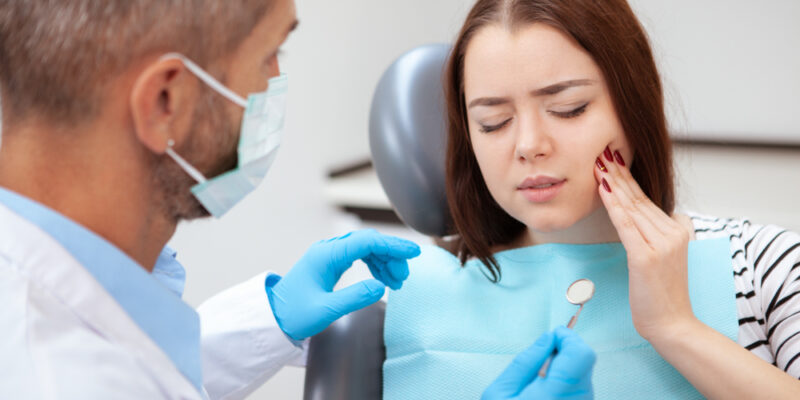Emergencies are unforeseen situations that always require immediate action to prevent further damage. There could be many instances that require prompt management in dentistry, too. It could be in the form of tooth mobility, bleeding, or severe pain.
Redlands family dentist and the team educate patients about dental emergencies and how to manage them.
An introduction to dental emergency
A dental emergency is a situation that requires immediate attention. Injury or trauma to your teeth and surrounding soft tissues can deteriorate. It is essential to contact your dentist immediately or reach out to the emergency room for timely management.
If you suffer from uncontrolled bleeding, broken facial bones, or persistent pain that does not subside with medications, you will need emergency dental care.
The different types of dental emergencies
The most common dental emergencies with management have been mentioned below:
Persistent toothache
- Common causes
- Tooth caries
- Dental fractures
- Trauma or injury
- Wisdom teeth impaction
- Management
- Gargle your mouth with lukewarm salt water
- Apply a cold compress to the affected area to reduce swelling
- Take an OTC (over-the-counter) painkiller
Tooth avulsion (knocked-out tooth)
- Common causes
- Trauma in the form of falls or accidents
- Management
- Do not touch the roots, and handle the crown carefully
- Rinse the tooth to remove debris
- Do not scrub the tooth
- Submerge the tooth in milk or saliva until you reach the dental office
Dental intrusion (tooth pushed into the jawbone)
- Causes:
- Extreme force due to trauma or injury
- Management:
- Gently rinse the mouth with normal tap water
- Place ice packs to reduce swelling
- Take painkillers to relieve pain
- Seek emergency dental care
Tooth luxation/Extrusion/Lateral displacement (tooth displacement)
- Causes
- Fractures and trauma
- Management
- Place a cold compress on the affected area
- Take pain relief medication
- Consult your dentist immediately
Other emergencies include:
- Crown fracture
- Root fracture
- Dental concussion
- Injured cheek, lip, and tongue
- Fractured jaw
- Head trauma
It is essential to stay calm and composed during a dental emergency. Ensure you manage the situation to protect the teeth and soft tissues from further damage.
Takeaway
A dental emergency is any injury to the oral cavity and surrounding facial structures leading to a cascade of uncontrolled symptoms. These can negatively impact your oral and facial form and function. Take special care of children since they are prone to falls and injuries.
Left untreated, a dental emergency can lead to further damage and complications. Thus, prompt and timely treatment is crucial.








Comments